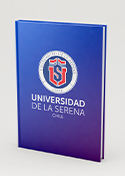Using [Ne v]/[Ne iii] to Understand the Nature of Extreme-ionization Galaxies
| dc.contributor.author | Cleri, NJ | |
| dc.contributor.author | Olivier, GM | |
| dc.contributor.author | Hutchison, TA | |
| dc.contributor.author | Papovich, C | |
| dc.contributor.author | [et al.] | |
| dc.date.accessioned | 2024-05-24T14:54:46Z | |
| dc.date.available | 2024-05-24T14:54:46Z | |
| dc.date.issued | 2023-08-01 | |
| dc.description.abstract | Spectroscopic studies of extreme-ionization galaxies (EIGs) are critical to our understanding of exotic systems throughout cosmic time. These EIGs exhibit spectral features requiring >54.42 eV photons: the energy needed to ionize helium into He2+ fully and emit He ii recombination lines. Spectroscopic studies of EIGs can probe exotic stellar populations or accretion onto intermediate-mass black holes (& SIM;10(2)-10(5) M (& ODOT;)), which are the possibly key contributors to the reionization of the Universe. To facilitate the use of EIGs as probes of high-ionization systems, we focus on ratios constructed from several rest-frame UV/optical emission lines: [O iii] & lambda;5008, H & beta;, [Ne iii] & lambda;3870, [O ii] & lambda; & lambda;3727, 3729, and [Ne v] & lambda;3427. These lines probe the relative intensity at energies of 35.12, 13.62, 40.96, 13.62, and 97.12 eV, respectively, covering a wider range of ionization than traced by other common rest-frame UV/optical techniques. We use the ratios of these lines ([Ne v]/[Ne iii] & EQUIV; Ne53, [O iii]/H & beta;, and [Ne iii]/[O ii]), which are nearby in wavelength, mitigating the effects of dust attenuation and uncertainties in flux calibration. We make predictions from photoionization models constructed from Cloudy that use a broad range of stellar populations and black hole accretion models to explore the sensitivity of these line ratios to changes in the ionizing spectrum. We compare our models to observations from the Hubble Space Telescope and JWST of galaxies with strong high-ionization emission lines at z & SIM; 0, z & SIM; 2, and 5 < z < 8.5. We show that the Ne53 ratio can separate galaxies with ionization from normal stellar populations from those with active galactic nuclei and even exotic Population III models. We introduce new selection methods to identify galaxies with photoionization driven by Population III stars or intermediate-mass black hole accretion disks that could be identified in upcoming high-redshift spectroscopic surveys. | |
| dc.identifier.citation | Nikko J. Cleri et al 2023 ApJ 953 10 DOI 10.3847/1538-4357/acde55 | |
| dc.identifier.issn | 0004-637X | |
| dc.identifier.other | 1538-4357 | |
| dc.identifier.uri | https://conocimientoabierto.online/handle/123456789/45 | |
| dc.language.iso | en | |
| dc.publisher | ASTROPHYSICAL JOURNAL | |
| dc.title | Using [Ne v]/[Ne iii] to Understand the Nature of Extreme-ionization Galaxies |
Files
License bundle

- Name:
- license.txt
- Size:
- 1.71 KB
- Format:
- Item-specific license agreed to upon submission
- Description: